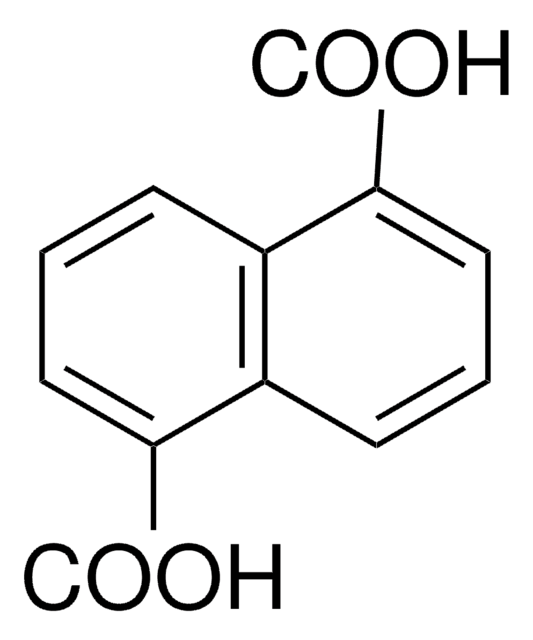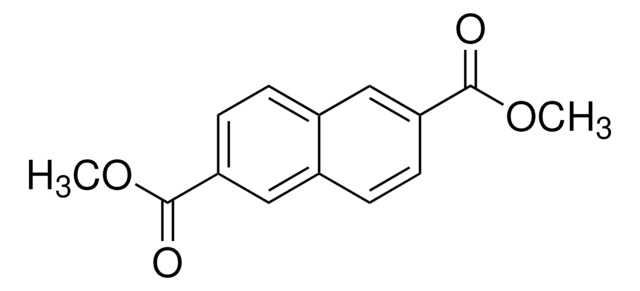724440
9,10-Anthracenedicarboxylic acid
95%
Synonim(y):
H2ADC
About This Item
Polecane produkty
Próba
95%
Postać
solid
charakterystyka ekologicznej alternatywy
Design for Energy Efficiency
Learn more about the Principles of Green Chemistry.
sustainability
Greener Alternative Product
mp
>300 °C
kategoria ekologicznej alternatywy
, Enabling
ciąg SMILES
OC(=O)c1c2ccccc2c(C(O)=O)c3ccccc13
InChI
1S/C16H10O4/c17-15(18)13-9-5-1-2-6-10(9)14(16(19)20)12-8-4-3-7-11(12)13/h1-8H,(H,17,18)(H,19,20)
Klucz InChI
FDFGHPKPHFUHBP-UHFFFAOYSA-N
Powiązane kategorie
Opis ogólny
Zastosowanie
Hasło ostrzegawcze
Warning
Zwroty wskazujące rodzaj zagrożenia
Zwroty wskazujące środki ostrożności
Klasyfikacja zagrożeń
Aquatic Acute 1
Kod klasy składowania
11 - Combustible Solids
Klasa zagrożenia wodnego (WGK)
WGK 3
Temperatura zapłonu (°F)
Not applicable
Temperatura zapłonu (°C)
Not applicable
Certyfikaty analizy (CoA)
Poszukaj Certyfikaty analizy (CoA), wpisując numer partii/serii produktów. Numery serii i partii można znaleźć na etykiecie produktu po słowach „seria” lub „partia”.
Masz już ten produkt?
Dokumenty związane z niedawno zakupionymi produktami zostały zamieszczone w Bibliotece dokumentów.
Klienci oglądali również te produkty
Produkty
Metal-organic frameworks offer high surface area materials for alternative energy applications through simple synthetic strategies.
Nasz zespół naukowców ma doświadczenie we wszystkich obszarach badań, w tym w naukach przyrodniczych, materiałoznawstwie, syntezie chemicznej, chromatografii, analityce i wielu innych dziedzinach.
Skontaktuj się z zespołem ds. pomocy technicznej












